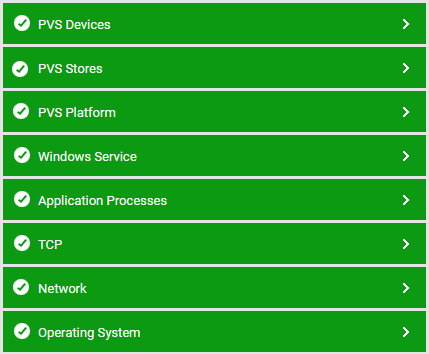Monitoring Citrix provisioning Server
eG Enterprise offers a 100%, web-based Citrix Provisioning Server monitoring model that periodically monitors the Citrix provisioning servers in a farm, and promptly updates the administrator with the status of the Provisioning servers, the target devices they manage, the vDisks they create, and the licensing and database servers they communicate with.

Figure 1 : The layer model of the Citrix Provisioning server
Each layer of Figure 1 above is mapped to a variety of tests that shed light on the health of the operating system, network, and critical services offered by the Provisioning server. Each test executes a command supported by the Management Command Line Interface (MCLI) of the Citrix Provisioning server to collect the required metrics. To enable the tests to use MCLI, the eG agent should fulfill the certain pre-requisites that are detailed in Pre-requisites for monitoring the Citrix Provisioning Server
Using the metrics reported by the tests, the following performance queries can be accurately answered:
- Is the License server in the Provisioning Services farm available?
- Is the Provisioning server able to connect to its database?
- How many sites, servers, stores, and farm views does the Provisioning server farm comprise of?
- Are there any inactive servers and inactive devices in the site?
- Which are the inactive vDisks in the vDisk pool?
- Which vDisks in the vDisk pool are not connected to any target devices?
- Are any vDisks locked? Are any target devices mapped to such vDisks?
- Is the write-cache of any vDisk growing at an alarming rate?
- Have any errors been recently captured by the error log?
- Which device collection consists of the maximum number of inactive devices? Which devices in the collection are inactive?
- Why exactly the user logins are failing during vDisk streaming process?
The Windows Services, Application Processes, TCP, Network, and Operating System layers and the tests associated with those layers have already been discussed in the Monitoring Unix and Windows Servers document. The sections that follow will discuss other layers of Figure 1 in great detail.